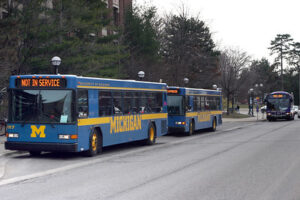Last week, Indiana University of Pennsylvania announced that it had eliminated five executive positions to reduce expenses and avoid increasing student tuition. The eliminated positions include the Vice President of Enrollment Management, the Vice President for University Advancement, the Associate Vice President for Academic Administration, the Associate Vice President of Human Resources, and the Chief Marketing Officer.
The cuts are notable because IUP is part of the Pennsylvania State System of Higher Education (PASSHE). That means the school already shares a range of administrative services with other schools in the system. According to the school’s announcement regarding the retrenchments, the cuts will save about $1.3M per year. PASSHE recently closed or merged several schools in its system in a bid to reduce costs.
IUP’s enrollment is one reason for the cuts. Over the past decade, the school’s enrollment has dropped by nearly half. Another motivator is the school’s plan to become more student focused. Part of that strategy includes simplifying IUP’s administration structure to make it easier for students to understand.
As their enrollments decline, higher education institutions will need to reckon their administrative costs. Retaining administrators unnecessarily inflates student tuition. In turn, rising costs make it more difficult for students to choose to enroll or remain at an institution.
The cost of institutional administration is not trivial, and higher education institutions often turn to student tuition to pay for everything from extra administration to neglected maintenance to new construction projects on campus. Since 1963, the cost of college tuition has increased by nearly 750% after adjusting for inflation.
Student tuition cannot fund extra administrators, construction projects
Unlike universities, community colleges receive taxes paid by the public directly. That tends to hide the high cost of administration, since that approach produces a reliable (and most often increasing) revenue stream, which alleviates the need to raise student tuition regularly to cover the cost of administrative bloat.
Except, of course, when community college administrators determine that student tuition increases can fund construction on campus. Community colleges can seek additional determinate funding to pay for capital projects. When the bonds are paid, the taxes go away. When a community college administration and its Board of Trustees opt instead to issue bonds backed by the community college’s operational dollars, the result is student tuition increases. Unfortunately, when these revenue-backed bonds are paid, the tuition increase does not go away. It remains in perpetuity to fund additional administrative lard – whatever that might be.
Ultimately, failure to seek capital funding from taxpayers will make community colleges similarly unaffordable to most students. It also ensures the downward spiral of enrollment because fewer students can afford to build and maintain buildings and pay for a dozen vice presidents while also attending classes and working minimum wage jobs.
Like direct student loans, “free community college” is just another opportunity to mask the administrative lard among low-cost institutions. Without strict cost controls and onerous conditions upon federal or state funding, community colleges – those that survive – will become the next casualty in the high cost of higher education. Institutions like IUP are learning – perhaps too late to save themselves – that unfettered administrative growth is not only reckless and expensive for students, but also a poor business strategy that quickly exceeds the students’ (and the public’s) willingness to play along.
Photo Credit: J Curnow , via Flickr
























